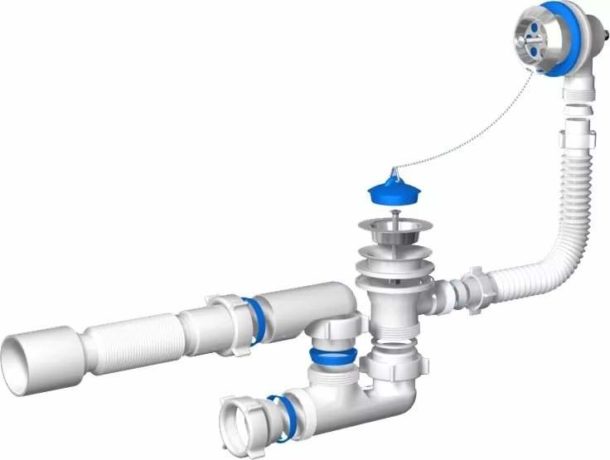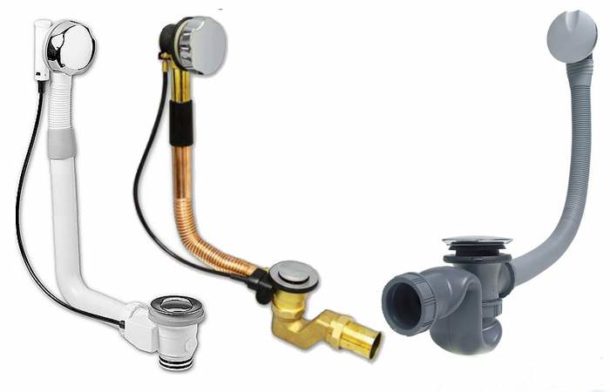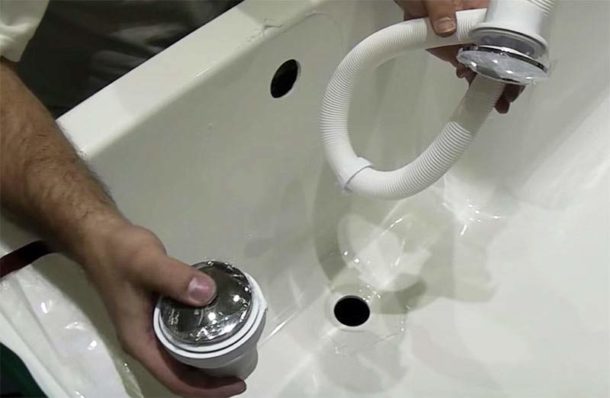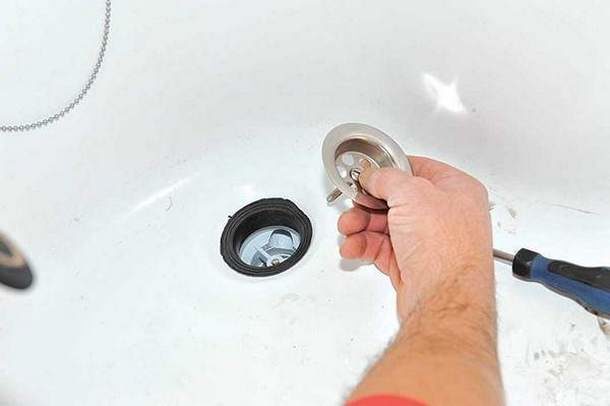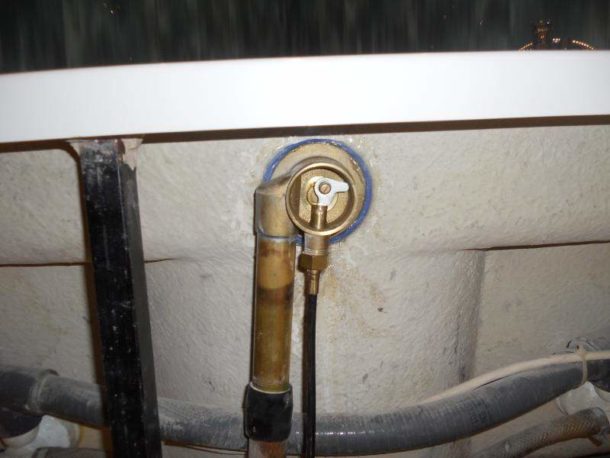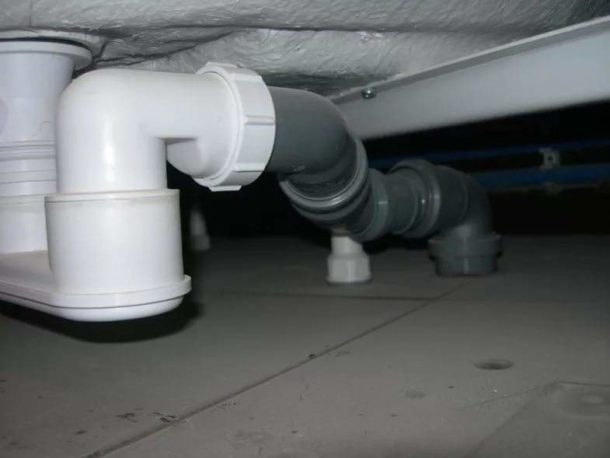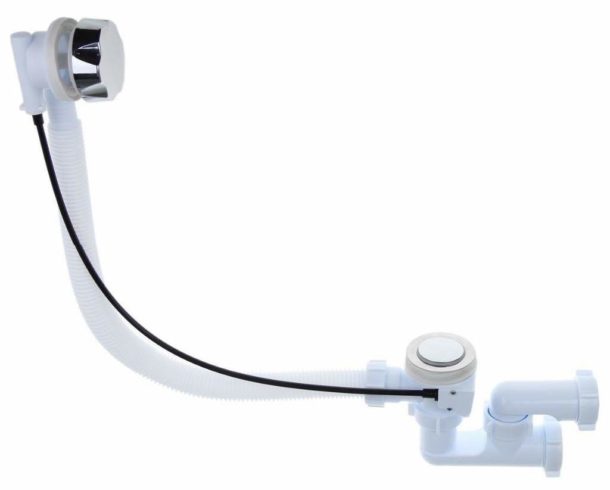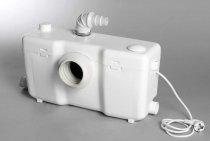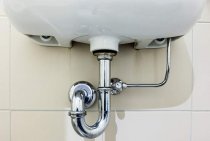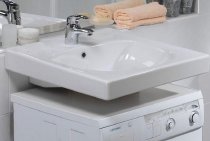A bathtub siphon is a fairly simple device. But from time to time it may be necessary to replace it or disassemble it for cleaning or prevention. Naturally, in these cases, you need to know how to assemble a bathroom siphon. Such a procedure will not cause any particular difficulties, but for high-quality installation and long service life of the product, it will be useful to take into account some of the nuances.
Selection of a new siphon
When replacing or installing for the first time, it is important to choose the right device. The easiest way is to take an old siphon to the store and choose the model that is as similar in characteristics as possible. Otherwise, you will have to select a siphon, having carried out the preliminary necessary measurements. Must know:
- Drain hole diameter.
- Overflow hole diameter.
- The distance between the floor and the installed bath. It should not be less than 15 cm.
It is not difficult to buy the simplest and cheapest siphon models, but they will not always last long and without leaks. More expensive, but high-quality models can be found in specialized stores.
The most commonly used plastic siphons. At a very affordable price, they have good performance characteristics: light weight, corrosion resistance. With proper assembly and maintenance of such a bath siphon, it will last a long time. In addition, it will not be difficult to install it on the bath with your own hands, just watch the video, which shows the installation process in detail.
Assembly of a conventional siphon
for sale siphons disassembled. Expensive models supplied in branded boxes are always supplied with detailed assembly instructions. Cheaper counterparts may not have it, or the quality of the user manual may be extremely poor. In this case, the installation of the siphon on the bath is carried out in the following order:
- A chain attached to the plug is attached to the overflow hole lining.
- You should make sure that there are no debris or fragments of the old gasket on the seats for the necks.
- A rubber gasket is inserted into the outlet pipe, after which this element is brought from below to the drain hole.
Rubber seals are tapered. It is important to install them correctly when assembling the structure. It is enough to remember a simple rule: with a wide part they should face the nut, and a narrow part should face the neck.
- From the inside of the bath, a protective grill is inserted into the drain hole, also equipped with a rubber seal. After making sure that both gaskets lay flat, you need to fix the connection with a copper screw. In older models, you can find a threaded cover: it is screwed directly into the outlet pipe.
When tightening threaded connections, do not apply excessive force. Firstly, this way you can easily break rather fragile plastic parts. Secondly, it may be necessary to fit the siphon “in place”, which will be prevented by premature tightening.
- The overflow drain is assembled in exactly the same way. It is connected to the siphon by means of a flexible corrugated hose, on which cone washers and nuts must first be put on.
When installing the siphon, it is recommended to use special sealants, and it is better to test the tightness of the joints, if there is time, after these solutions have dried.
- A removable elbow is attached to the main drain. With its help, such a function of the siphon connection as the creation of a water seal is provided. It is thanks to him that unpleasant odors from the sewer do not enter the apartment.At the same time, garbage accumulates in this knee, as in a sump, so you will have to periodically clean it.
- An adapter is inserted into the other end of the elbow, connecting the device to the sewer. All these parts are connected with plastic nuts, under which conical gaskets are placed.
Sewer connection
The last stage is the connection to the sewer. If the sewer pipe is made of PVC, a threaded connection with a sealing gasket is used. In the case of a cast-iron pipe or a mismatch in diameters, you will have to purchase a rubber coupling-adapter. The siphon pipe should go into it at least 5 cm, do not forget about sealant.
After assembly is completed and all connections are tightened and the sealant has set, a leak test is carried out. To do this, fill the bath until the water flows through the overflow hole. The absence of liquid drops at the joints will indicate that the siphon is installed correctly.
Installation features of other models
In addition to plastic devices, non-separable metal models are used, as well as automatic and semi-automatic siphons.
The main point that you should pay attention to when mounting a non-separable model made of brass or copper is the angle at which the siphon pipe enters the sewer. It should be minimal, otherwise leaks are inevitable, and no sealant will save here. In difficult cases, you will have to buy some parts for the sewer system in order to get the desired angle. The installation of the siphon is carried out using a sealant and a gradual tightening of the threaded connections.
The installation of semi-automatic products will differ only in the installation of special controls. It is carried out according to the instructions that are necessarily attached to such siphons.
But the installation of automatic drain devices, especially if they have an electronic control unit, should be carried out by representatives of the seller or manufacturer: with self-installation, the warranty for these products automatically “burns out”.
